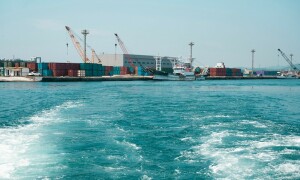One of the widest investigations into autism has implicated several dozen genes, boosting the search for a diagnostic tool and new treatments, scientists said on October 29. Mutations in these genes emerged in two studies which compared thousands of people with autism spectrum disorder against family members with or without ASD.
Many of the newly-found genetic variants are so-called spontaneous mutations, meaning they were not passed down from the parents. The analysis was carried out by two teams, reporting separately in the science journal Nature.
ASD is a developmental disorder that has no cure. It leads to difficulties, sometimes cripplingly so, in social, emotional and communication skills. The causes of the condition, though, are unclear. Whether the risk comes from genes or the environment, or both - and if so, to what degree - are all fiercely debated.
Many of the newly-found genes are thought to be involved in the function of brain cells, including connections between neurons. Spontaneous mutations, also called de novo mutations, are believed to occur early in foetal development, when errors in DNA code are transmitted when cells divide. They have also been implicated among children born with cardiac defects, when their parents or brothers and sisters do not have congenital heart disease.
By eventually building a picture of DNA clues, doctors could help diagnose a child at risk of autism and boost chances of developing drugs to tackle the condition, the investigators said.
"We have a set of genes for which now, if people see a likely gene-disruptive mutation when sequencing a young child, there's a high risk of the child developing autism," said Evan Eichler of the Simons Foundation Autism Research Initiative, a US group.
"That, to my mind, is pretty powerful stuff," said Eichler. "Recognising this early on may allow for earlier interventions, such as behavioural therapies, improving outcomes in children."
The study in which Eichler's team was involved found evidence that spontaneous mutations contribute to ASD in at least a quarter of families where a child has autism but their parents or siblings are unaffected. It also found that "higher-IQ" ASD, which mainly affects boys, has a different genetic architecture compared to "lower-IQ" autism, which affects both genders equally.
David Skuse, at the Great Ormond Street Hospital in London, who co-authored the other study, said gene diagnosis could help parents prepare for an autistic child, and inform them of the likelihood of having more children with ASD.
"Building a resource of genes that are implicated in the disorder also makes research by pharma companies more commercially valuable, meaning that treatments for the condition may improve in future," said Skuse.
BR100
12,702
Increased By
113.8 (0.9%)
BR30
38,258
Increased By
378.2 (1%)
KSE100
118,383
Increased By
1067.8 (0.91%)
KSE30
36,395
Increased By
278.8 (0.77%)






















Comments
Comments are closed.